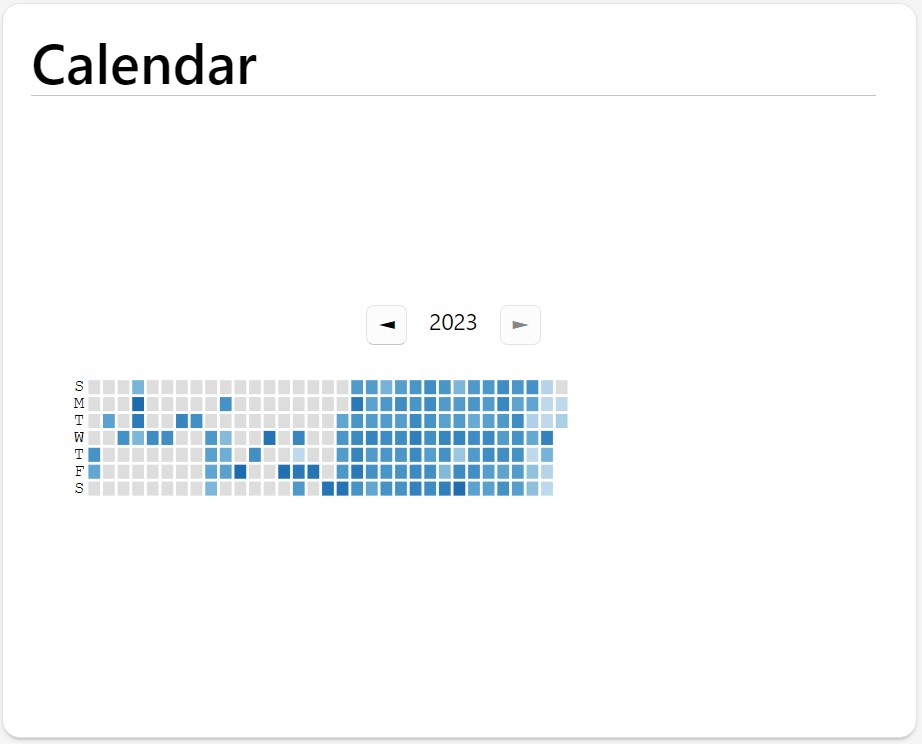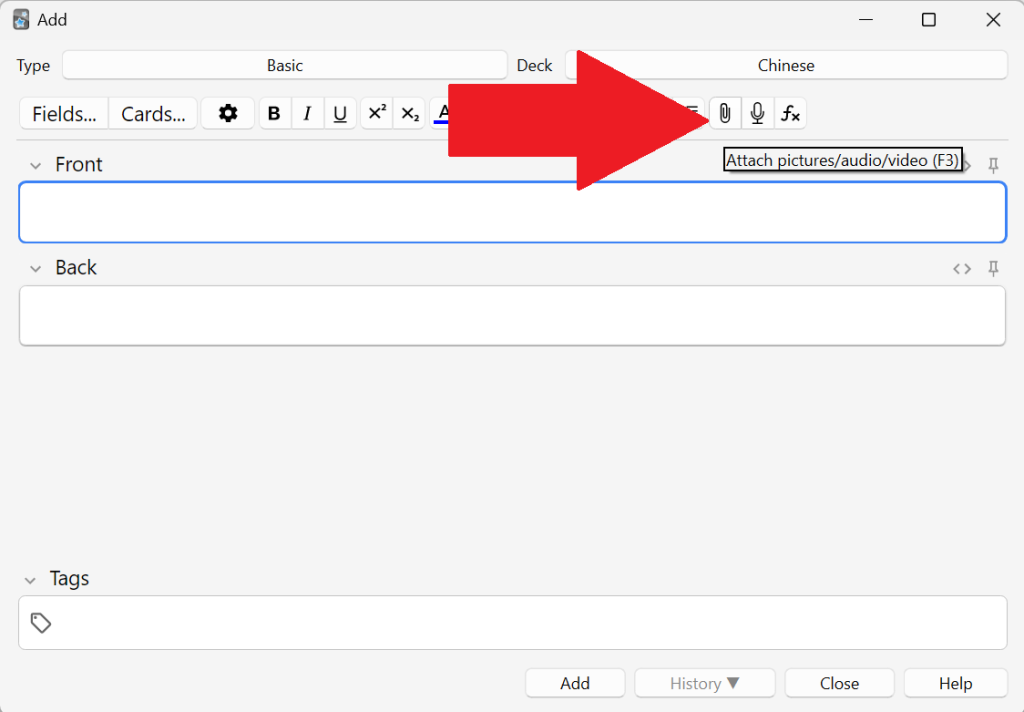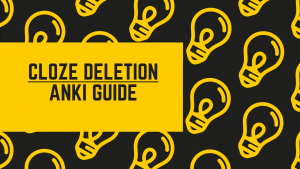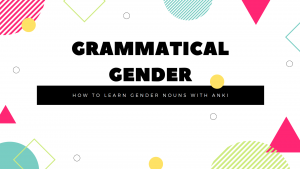10 Easy Anki Language Learning Tips to Help You Reach Fluency
Anki is a popular flashcard software that is often used by language learners to improve their vocabulary, grammar, and overall language skills. While Anki can be a powerful tool for language learning, it’s important to use it effectively in order to make the most of it. In this article, we will share 10 Anki language learning tips that can help you to get the most out of your studying.
1. Track your progress and measure your improvement.
It’s true that knowledge is power, and this is especially true when it comes to Anki language learning. By tracking your progress and understanding your statistics on Anki, you can gain valuable insights into your language learning journey.
You can see which areas you need to focus on more and where you are making the most progress. This helps you to make more informed decisions about your study habits, so you can learn more effectively and reach fluency faster.
Knowing your statistics can also be a great source of motivation. Seeing the numbers improve can give you a sense of accomplishment and encourage you to keep going. It can be easy to feel discouraged when learning a new language, but seeing your progress can help you stay motivated and focused.
In addition, knowing your statistics can help you to identify any areas of weakness and work to improve them. By understanding what you need to work on, you can tailor your studies to address your specific needs and become a more well-rounded language learner.
Anki allows you to track your progress and see how well you are retaining the information that you are learning.
Tracking your progress in Anki can be done through various methods. One way is by checking your overall statistics, which can be found via the Stats button on the main Decks screen. This will give you a breakdown of your total number of cards, the number of new cards you have learned each day, and your average time per card.

Additionally, you can track your progress by creating custom study sessions and setting specific goals for yourself, such as a certain number of new cards or a certain amount of time spent studying each day.
This will allow you to measure your improvement and see how well you are retaining the material. By regularly tracking your progress, you can stay motivated and stay on track to reach fluency in your target language.
2. Use Anki on a variety of devices to study anytime, anywhere.
Anki is available on a variety of devices, including desktop computers, laptops, tablets, and smartphones. You can sync your flashcard decks and progress between all of them. This makes it easy to study anytime, anywhere, and on the device that is most convenient for you.
Having Anki available on multiple devices allows you to fit studying into your schedule, no matter how busy or hectic it may be. Whether you have a few minutes to spare while waiting in line or a longer block of time to devote to studying, you can easily access Anki and make the most of your study time.
Additionally, being able to study on different devices can also help to keep your studying varied and engaging. For example, you could use a laptop to create and review flashcards, while using a smartphone to practice listening comprehension on the go. This variety can help to prevent boredom and keep you motivated to continue learning.

3. Use Anki for a wide range of language learning goals, including vocabulary acquisition, pronunciation and grammar practice.
Anki is an incredibly versatile tool that can support you in various aspects of language learning beyond vocabulary acquisition. With Anki, you can create personalized flashcards tailored to your specific language learning goals, whether it’s improving your pronunciation, practicing grammar structures, or reinforcing key language concepts.
One of the great advantages of Anki is its flexibility, allowing you to customize your flashcards to suit your individual needs. For pronunciation training, you can include audio recordings or examples of native speakers to help you refine your accent and intonation. When it comes to grammar practice, you can create flashcards with sentence structures or specific grammar rules to reinforce your understanding and application of the language.
However, creating your own flashcards can be time-consuming and require significant effort. That’s where premade Anki flashcards from Speakada can be a game-changer. Our company specializes in designing high-quality Anki flashcard decks that cover a wide range of languages, including pronunciation, vocabulary, and grammar. These ready-to-use flashcards are meticulously crafted by language experts, saving you hours of work and ensuring that you have access to effective study materials right away.
By utilizing premade Anki flashcards, you can streamline your language learning journey, allowing you to focus more on studying the language itself and immersing yourself in authentic language experiences. With Speakada’s Anki flashcard decks, you can enhance your vocabulary, refine your pronunciation, and master essential grammar concepts, ultimately accelerating your path to fluency.
Remember, Anki is a powerful tool that can be customized to cater to your language learning goals. Whether you choose to create your own personalized flashcards or utilize premade Anki flashcards from Speakada, Anki’s adaptability and the support it provides will undoubtedly boost your language learning progress.
4. Be strategic about which cards you mark as “Easy” or “Hard.”
When reviewing cards in Anki, you have the option to mark a card as “Easy” or “Hard.” If you mark a card as “Easy,” it will appear less frequently in review sessions. If you mark a card as “Hard,” it will appear more frequently in review sessions. Be strategic about which cards you mark as “Easy” or “Hard” based on your personal learning style and goals.
For example, if you are trying to focus on memorizing specific vocabulary words that are difficult, you may want to mark any cards that contain those words as “Hard” so that they appear more frequently in your review sessions.
On the other hand, if you are trying to review grammar rules that you have already mastered, you may want to mark those cards as “Easy” so that they appear less frequently and you can focus on more challenging material.
By being strategic about which cards you mark as “Easy” or “Hard,” you can tailor your study sessions to your specific learning needs and goals, which can help you reach fluency faster.
5. Use the “Custom Study” feature to focus on specific areas of weakness.
Anki’s “Custom Study” feature allows you to focus on specific areas of weakness by selecting specific decks or cards to review. This can be a helpful way to target your studying and make the most of your time.
The “Custom Study” feature can be accessed from within each deck in Anki. This feature allows you to select specific decks or cards to review. You can filter your selection based on various criteria such as card type, new cards, forgotten cards, tag, or due date. This can be a powerful tool for language learners who want to focus on specific areas of weakness or brush up on certain topics before an exam.
For example, if you are struggling with grammar rules in your target language, you can use the “Custom Study” feature to select all of the cards in your grammar deck and review them until you feel confident. The “Custom Study” feature can also be useful for learners who want to review only new cards or cards that have been marked as “Hard.” By using the “Custom Study” feature, you can tailor your studying to your specific needs and goals, making the most of your time and effort.

6. Use multimedia to make your studying more engaging.
Anki allows you to add multimedia elements such as images, audio, and videos to your cards. This can make your studying more engaging and can help to reinforce the information in your memory.
Additionally, incorporating multimedia can help to make the material more relatable and easier to understand. For example, if you are learning a new word in a foreign language, you may find it helpful to include an image of the object associated with that word. Or, if you are learning a new grammar concept, you may find it helpful to include an audio clip of a native speaker using that grammar structure in conversation.
Using multimedia can also add an element of fun to your studying, making it feel less like a chore and more like an engaging activity. So, if you are feeling stuck in your language learning journey, consider incorporating multimedia elements into your Anki cards to shake things up and keep things interesting.

7. Use the “Suspend” feature to optimize your review sessions in Anki.
The “Suspend” feature in Anki can be a powerful tool to enhance your language learning experience. Here are three scenarios where suspending cards can be highly beneficial:
Scenario #1: Mastered Content:
When you have fully mastered a card and no longer need to review it, suspending it allows you to declutter your review sessions. By removing these mastered cards temporarily, you can focus your attention and energy on the cards that still require your active studying. This targeted approach helps streamline your review process and saves valuable study time.
Scenario #2: Managing Accumulated Review Backlog:
If you’ve taken a break from Anki and find yourself facing a significant backlog of accumulated cards for review, suspending cards becomes an effective strategy. By identifying cards that are less crucial or less relevant at the moment, you can suspend them temporarily. This helps alleviate the overwhelming feeling of a massive review load and allows you to prioritize the most important cards. As you gradually catch up on your studies, you can reintroduce the suspended cards at a more manageable pace.
Scenario #3: Challenging Cards:
Some cards may consistently pose difficulties for you, and you find yourself struggling to retain the information despite repeated attempts. In such cases, suspending the card can be a wise decision. It gives you the opportunity to reevaluate the card’s content and consider alternative approaches. You may choose to create a new card with a more personalized context or leave it for now and revisit it in the future when your language proficiency has improved. Suspending challenging cards temporarily prevents frustration and allows you to focus on other aspects of your language learning journey.
Remember, when you suspend a card, it is not permanently deleted but merely set aside for a temporary period. It will still be included in your future review sessions if you choose to reintroduce it.
The “Suspend” feature empowers you to customize your Anki experience, tailoring it to your unique learning needs and maximizing your progress towards fluency.
8. Take breaks and be consistent with your studying.
It’s also important to find a balance between taking breaks and being consistent with your studying. While taking breaks is important to allow your brain to rest and avoid burnout, it’s also important to set aside dedicated study time on a regular basis. This could mean setting aside a certain amount of time each day, or perhaps scheduling a longer study session once or twice a week.
By consistently setting aside time to study with Anki, you can effectively reinforce the information you are learning and make progress in your language learning journey. Additionally, it’s important to be consistent with your studying over a longer period of time.
Rather than trying to fit all of your studying into one intense week or month, try to spread it out over a longer period of time. This can help to reinforce the information in your memory and ensure that you are retaining what you are learning. So, taking breaks and being consistent with your studying are both important factors in reaching fluency faster with Anki.
9. Use immersion techniques to create new cards
One of the best ways to become fluent in a new language is to immerse yourself in it as much as possible. This can include reading news articles, watching TV shows, or listening to podcasts in the language you’re learning.
Take this opportunity to create cards for words or phrases that you come across while engaging in these activities. For example, if you’re reading a book in your target language, you can create cards for any new vocabulary words that you encounter. Similarly, if you’re watching a TV show, you can create cards for phrases or idioms that you hear and want to remember.
By actively seeking out new language input and creating cards for it, you can further immerse yourself in the language and improve your fluency.
10. Personalize Cards for Better Results
Personalizing your cards can be a powerful way to improve your retention and help you learn a new language more effectively.
For example, let’s say you are learning Spanish and you want to remember the word for “mother.” Instead of just writing the word “madre” on a flashcard, you could personalize the card by adding a photo of your own mother or by including her name in the notes section of the card. This personal connection can help to reinforce the information in your memory and make it more meaningful to you.
While it is important to personalize your flashcards to help with retention, it is also important to not spend too much time creating personalized cards for every word you come across. This can be time-consuming and may not be the most efficient use of your study time.
Instead, focus on personalizing cards for words that are difficult for you to remember or that are relevant to your goals. By personalizing your cards and focusing on words that are challenging or relevant to you, you can make the most of your study time and increase your chances of success in reaching fluency.
Supercharge Your Language Learning with Anki
In conclusion, Anki can be a powerful tool for language learning, but it’s important to use it strategically and to find what works best for you. By following these 10 Anki language learning tips, you can make the most of Anki and achieve your language learning goals.
Whether you are just starting out with Anki or you are an experienced user, these tips can help you to improve your language skills and make progress in your language learning journey.










